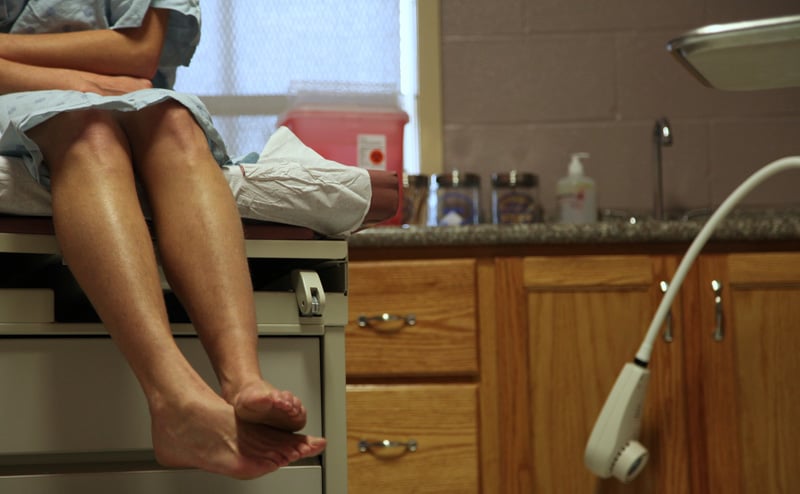
Texas’ Other Death Penalty
A Galveston medical student describes life and death in the so-called safety net.
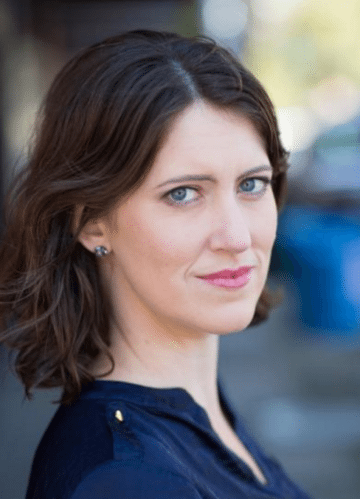
I have received permission to share my patients’ stories, and changed or omitted some names. This is a personal essay; the views are my own and do not reflect those of St. Vincent’s House or St. Vincent’s Student-Run Free Clinic.
The first patient who called me “doctor” died a few winters ago. I met him at the St. Vincent’s Student-Run Free Clinic on Galveston Island. I was a first-year medical student then, and the disease in his body baffled me. His belly was swollen, his eyes were yellow and his blood tests were all awry. It hurt when he swallowed and his urine stank.
I saw him every Thursday afternoon. I would do a physical exam, talk to him, and consult with the doctor. We ran blood counts and wrote a prescription for an antacid—not the best medication, but one you can get for $4 a month. His disease seemed serious, but we couldn’t diagnose him at the free clinic because the tests needed to do so—a CT scan, a biopsy of the liver, a test to look for cancer cells in the fluid in his belly—are beyond our financial reach.
He started calling me “Dr. Rachel.” When his pain got so bad that he couldn’t eat, we decided to send him to the emergency room. It was not an easy decision.
There’s a popular myth that the uninsured—in Texas, that’s 25 percent of us—can always get medical care through emergency rooms. Ted Cruz has argued that it is “much cheaper to provide emergency care than it is to expand Medicaid,” and Rick Perry has claimed that Texans prefer the ER system. The myth is based on a 1986 federal law called the Emergency Medical Treatment and Labor Act (EMTALA), which states that hospitals with emergency rooms have to accept and stabilize patients who are in labor or who have an acute medical condition that threatens life or limb. That word “stabilize” is key: Hospital ERs don’t have to treat you. They just have to patch you up to the point where you’re not actively dying. Also, hospitals charge for ER care, and usually send patients to collections when they cannot pay.
My patient went to the ER, but didn’t get treatment. Although he was obviously sick, it wasn’t an emergency that threatened life or limb. He came back to St. Vincent’s, where I went through my routine: conversation, vital signs, physical exam. We laughed a lot, even though we both knew it was a bad situation.
One night, a friend called to say that my patient was in the hospital. He’d finally gotten so anemic that he couldn’t catch his breath, and the University of Texas Medical Branch (UTMB), where I am a student, took him in. My friend emailed me the results of his CT scans: There was cancer in his kidney, his liver and his lungs. It must have been spreading over the weeks that he’d been coming into St. Vincent’s.
I went to visit him that night. “There’s my doctor!” he called out when he saw me. I sat next to him, and he explained that he was waiting to call his sister until they told him whether or not the cancer was “bad.”
“It might be one of those real treatable kinds of cancers,” he said. I nodded uncomfortably. We talked for a while, and when I left he said, “Well now you know where I am, so you can come visit me.”
I never came back. I was too ashamed, and too early in my training to even recognize why I felt that way. After all, I had done everything I could—what did I have to feel ashamed of?
UTMB sent him to hospice, and he died at home a few months later. I read his obituary in the Galveston County Daily News.
The shame has stuck with me through my medical training—not only from my first patient, but from many more. I am now a director of the free clinic. It’s a volunteer position. I love my patients, and I love being able to help many who need primary care: blood pressure control, pap smears, diabetes management. We even do some specialty care. But the free clinic is also where some people learn that there is no hope for the chemotherapy or surgery that they need but can’t afford. When UTMB refuses to treat them, it falls to us to tell them that they will die of diseases that are, in fact, treatable.
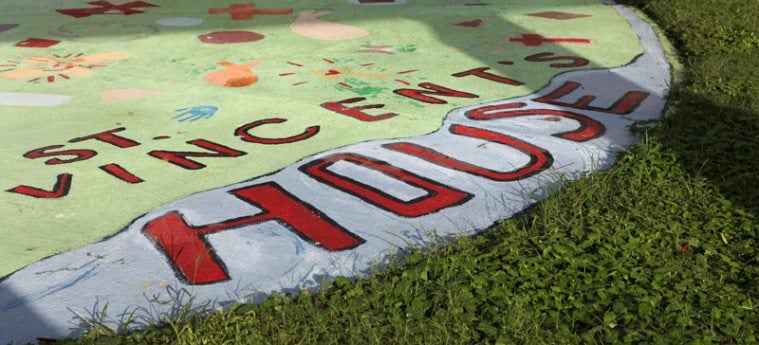
St. Vincent’s is the primary care provider for more than 2,000 patients across Southeast Texas. Our catchment area is a strip of coastal plain strung with barrier islands. Drive inland and you start to see live oaks; go toward the coast and the oil refineries loom up over neighborhoods. The most polluting refinery in the nation is here, in Texas City. Our patients are factory workers, laborers, laid-off healthcare workers, the people behind the counters of seafood restaurants.
Most of our patients come from Galveston and Brazoria counties, but some drive two hours from Port Arthur or over from Orange, near the Texas-Louisiana border, to get to us. That’s how hard it is to see a doctor in Southeast Texas: People take a day off work to drive two hours to a student-run clinic that can only provide basic care.
The clinic is overseen by faculty physicians—UTMB docs—who see every patient along with us students and prescribe medications. These doctors are volunteers. We are not a UTMB clinic, but we depend on UTMB, which is twenty blocks from St. Vincent’s, for training our student volunteers, for liability insurance and for running our blood tests and other labs. UTMB has given us grants, including one that helped us get our electronic medical records system, and funds a nurse-managed day clinic for the uninsured at St. Vincent’s House.
But UTMB is no longer the state-subsidized charity hospital it used to be. The changes began before Hurricane Ike in 2008. But after the storm, UTMB administrators drastically cut charity care and moved clinics to the mainland, where there are more paying patients. The old motto “Here for the Health of Texas” was replaced by “Working together to work wonders.” Among those wonders are a new surgical tower and a plan to capitalize on Galveston’s semi-tropical charm by attracting wealthy healthcare tourists from abroad. Medical care for the poor is not, apparently, among the wonders. Whereas UTMB accepted 77 percent of charity referrals in 2005, it was only taking 9 percent in 2011.
UTMB ascribes these changes to financial strain from Hurricane Ike, the county’s inability to negotiate a suitable indigent-care contract and loss of state funding. The state blames budget shortfalls. The Affordable Care Act, better known as Obamacare, could have been a huge relief. However, Gov. Rick Perry rejected billions of dollars in federal funding to expand Medicaid, funding that should have brought access to more than a million Texans, including many St. Vincent’s patients.
Perry’s refusal is catastrophic health policy. For patients, it means that seeking medical care will still require risking bankruptcy, and may lead nowhere. For doctors, the message was not only that our patients’ lives don’t matter, but also that medicine—our old profession, so full of people who genuinely want to help others—will continue to be part of the economic machine that entrenches poverty. When the poor seek our help, they often wind up with crippling debt.
Because they can no longer count on UTMB to accept their patients, UTMB doctors now refer many to St. Vincent’s. They’ll treat someone for a heart attack (because that’s an emergency covered by EMTALA), then refer them to us for follow-up, even though we don’t have a cardiologist. They’ll stabilize a patient after her third stroke, put her on blood thinners and send her to us. They once sent us, from the ER, a man with a broken arm. They put the arm in a splint and referred him to us. What did they expect us to do—orthopedic surgery? Put on a cast? We don’t even have an x-ray machine.
I do not think that these referrals are an official policy. Rather, they are the work of doctors and nurses trying to do something for patients who have been refused care through the financial screening process at the hospital. Former St. Vincent’s leader Dr. Merle Lenihan has described the clinic as a “moral safety valve.” It protects UTMB from confronting the consequences of the state’s refusal to provide care.
Among those consequences are the deaths of the poor. As Howard Brody, director of the Institute for the Medical Humanities, has shown, 9,000 Texans per year will die needlessly as a result of our failure to expand Medicaid. However, because dying patients are often too sick, exhausted and wracked with pain to protest, UTMB and states like Texas aren’t forced to reckon with the consequences of their policy decisions.
Because the very sick and the dying may not be able to speak about these issues, health-care providers—particularly the providers of the so-called “safety net”—must do so. It is in our clinics, in the bodies of our patients, where the consequences get played out.
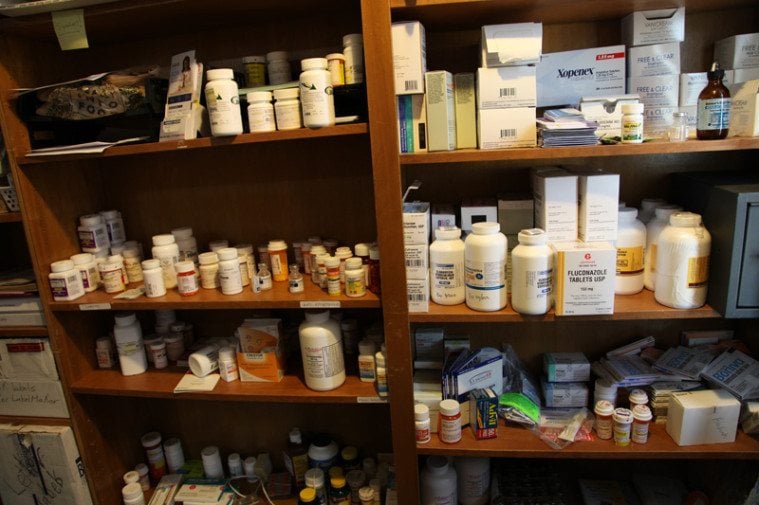
Danielle has schizophrenia, and she’s young, and she struggles with the medications. When we talk, there are long gaps in the conversation where, I think, she hears other voices. In one of these gaps, I notice the sun slanting in where it’s beginning to set beyond the ship channel. There’s gospel music streaming out over the basketball court from the speakers mounted on the side of the community center. I am reminded of what the director of the community center, an Episcopal minister, believes: Every patient is a miracle. The St. Vincent’s House motto is “An oasis of hope, expecting miracles.”
Danielle looks up and stares right at me. “Here’s what I want to know,” she says. “Why are we so poor?”
St. Vincent’s House, which hosts the free clinic, is a historically African-American community center in the lowest-income neighborhood on our island, next to where the housing projects were before they were condemned. The federal government ordered Galveston to rebuild the public housing after Hurricane Ike, but the city refused. We elected a mayor who ran on an explicit anti-public housing platform. Just like the medical system, the city knows whose lives matter.
Now, dandelions grow in the empty lots left after Ike flooded the neighborhood. People sit on the ragged, cracking curbs, and run wheelchairs right down the middle of the street because the sidewalks tend to end in grassy fields or little precipices.
The community center employs a person to stand in the street and walk us to our cars after clinic if we want. Who is he protecting us from, I wonder. Our patients?
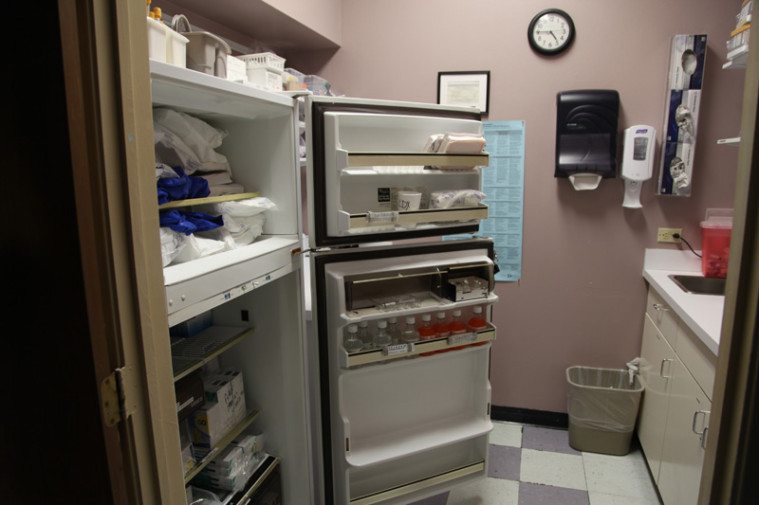
In my second year of medical school, I took a small-group course with a famously terrifying surgeon. He told us his moral motto: “A physician never takes away hope.”
I never figured out how that motto could guide doctors through a system where our patients are dying from treatable diseases. Part of my job, it seems, is precisely that: to sit down with patients and, as gently as possible, take away hope.
Consider Vanessa and Jimmy. They met in New Orleans when she was 18. She was working cleaning motels, and he took her on a tour of the tugboat he was captain of. Vanessa says they came to St. Vincent’s because the shipyard Jimmy worked for opted out of providing insurance even for full-time employees like him. They looked for insurance on the open market, but couldn’t afford it.
The Affordable Care Act is supposed to help families like Vanessa and Jimmy get insurance. Folks higher on the income scale should now be able to afford insurance thanks to government subsidies. The poorest of the (legally documented) poor should be covered by Medicaid. And for those people in between, the federal government offered to pay for almost all the costs of expanding Medicaid.
More than a million Texans—and most St. Vincent’s patients—are somewhere in between. They are the working poor, or they are adults without dependent children, who cannot qualify for Medicaid in Texas, no matter how poor they are.
When Jimmy’s labs showed a dangerously high white blood cell count, we sent him to the ER. It was pneumonia, and there was a huge tumor underneath. Current guidelines would recommend screening Jimmy for this kind of cancer every year, but we have neither the equipment nor the funds to offer screening. So it got caught late.
After Jimmy was diagnosed, I helped Vanessa fill out the paperwork to request financial assistance for cancer care. She wanted to know how likely UTMB was to offer her husband assistance he needed.
In addition to only accepting 9 percent of applicants, the charity care approval process is a dark art, and we never know who will be accepted. According to the UTMB Charity Care policy, the institution may consider not only a person’s income and diagnosis, but also such vague qualities as “the history of the problem.” They also consider whether the treatment will offer “educational benefit” to medical students and trainees. Physicians in training have to see a certain number of each type of case. If the programs are hitting quotas with funded patients, patients like Jimmy are less likely to be accepted.
The complexity and vagueness of these policies meant that it was impossible to tell Vanessa how likely UTMB was to take her husband. We can guess around a 10 percent chance, but we never really know.
For patients facing cancer, this is not a hopeful answer.
Vanessa called from a hospital in Houston in early November, distraught, asking me to help her decide whether or not to let the doctors turn Jimmy’s breathing machine off. She was afraid she wouldn’t be able to live with herself, no matter which she chose. I gave her the advice I’d give a friend: that I trusted her love for her husband and her ability to decide from a place of love. Jimmy died late that night.
Vanessa’s request for UTMB funding wasn’t approved. She has received a $17,000 bill from UTMB for the visit when Jimmy went through the ER, and a $327,000 preliminary bill from the Houston hospital.
If the Affordable Care Act had been in effect last year, they would have been able to afford insurance, get treatment early and avoid bankruptcy. I use stories like theirs—cancer stories—when I am encouraging my patients to check out the insurance exchanges.
But with Jimmy gone and Vanessa unemployed, she now falls into the Medicaid coverage gap. I don’t know how she will get care, if she ever needs more than St. Vincent’s can give.
My first patient, the one who died in hospice, might have lived if his cancer had been treated before it had spread from the kidney. But without the Medicaid expansion, the Affordable Care Act wouldn’t help him: As an adult with no dependent children, he wouldn’t qualify for Medicaid now.
In a better medical system, he’d have had a chance at a more dignified experience of illness. He wouldn’t have had to wait for hours in a crowded free clinic, and assume the posture of gratefulness that charity seems to require. He wouldn’t have had to be treated in part by an earnest, but unskilled, first-year medical student. He, like so many Texans, deserved better.
When one of our St. Vincent’s patients gets a bad diagnosis, we start sending faxes: to UTMB, to MD Anderson, to anywhere that might have funds to help them. Sometimes it works out, but often it doesn’t. Sometimes I think of it as “sending faxes into the abyss.” And sometimes I think of it as the slow, diligent, technical way that I have of insisting that these lives matter.


